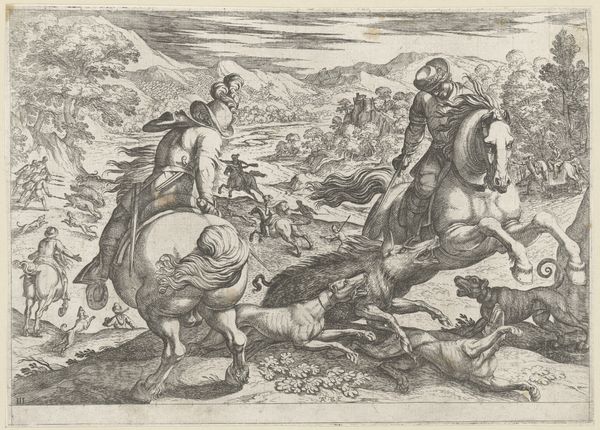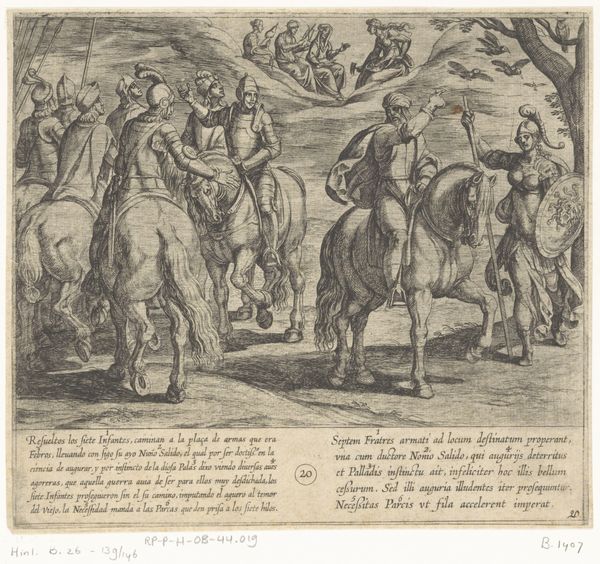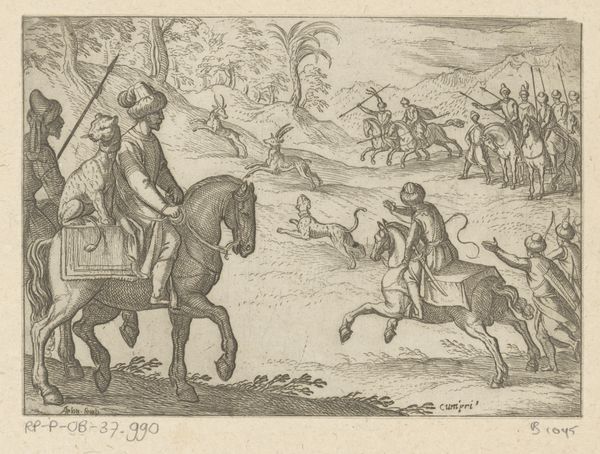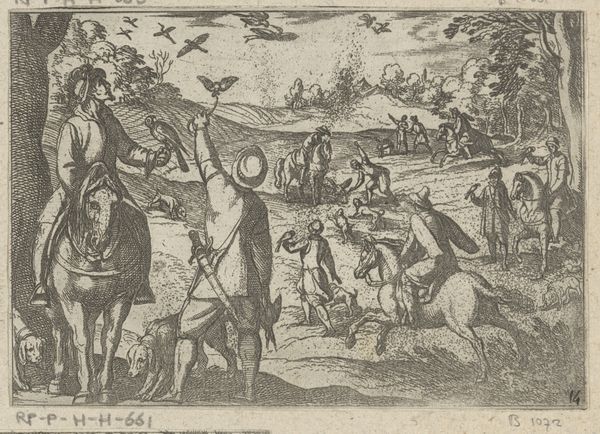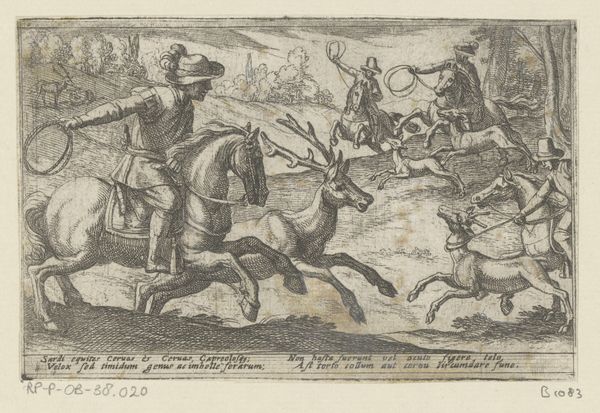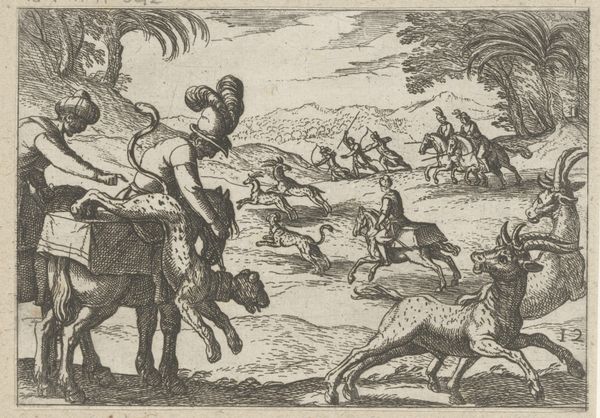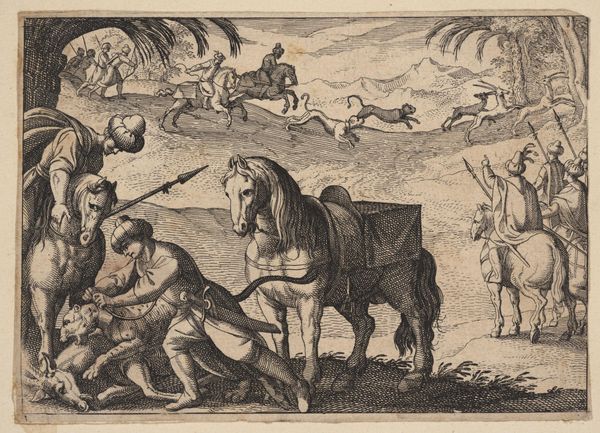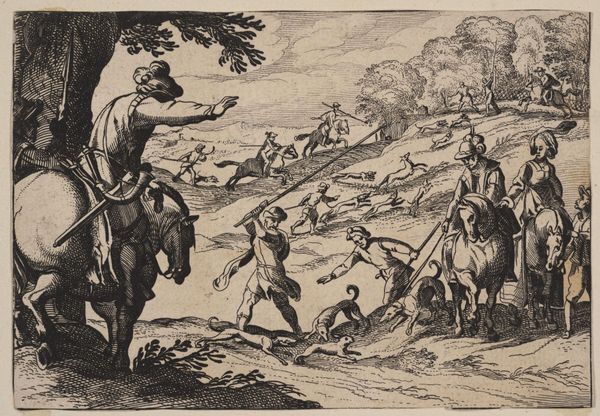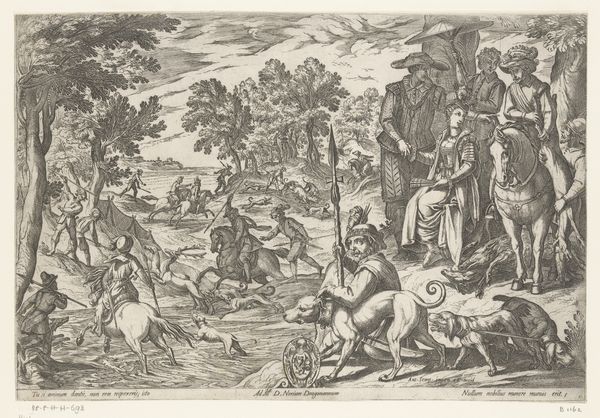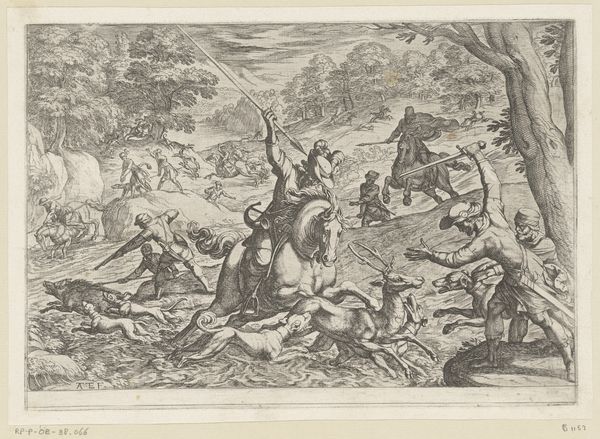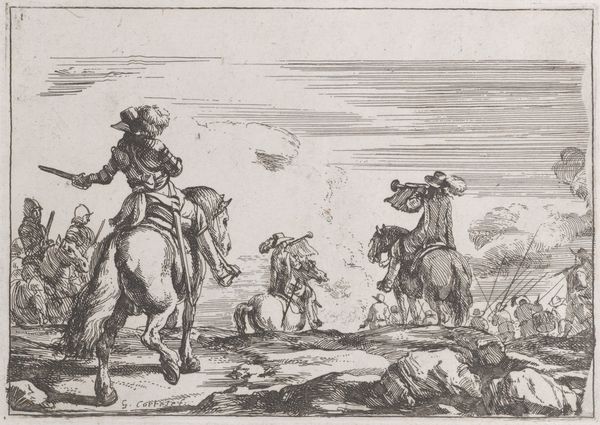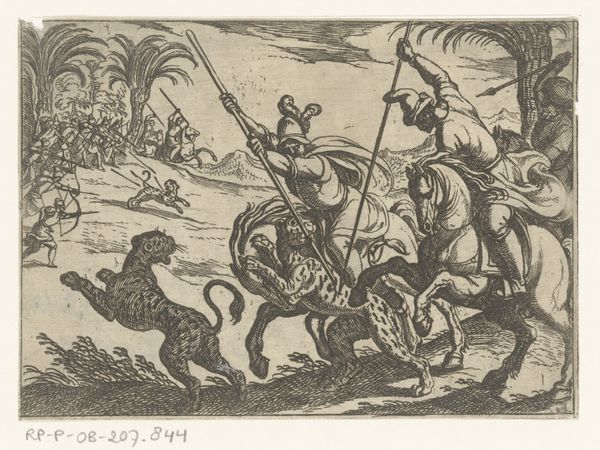
print, engraving
#
baroque
# print
#
figuration
#
line
#
history-painting
#
engraving
Dimensions: plate: 10.4 x 15.7 cm (4 1/8 x 6 3/16 in.) sheet: 10.8 x 17.7 cm (4 1/4 x 6 15/16 in.)
Copyright: National Gallery of Art: CC0 1.0
This engraving of Alexander the Great and Neptune was created by Willem Basse, around the mid-17th century. Its fine lines and the precision of the image derive from the labor-intensive process of etching. To create this print, Basse would have first coated a copper plate with wax. Then, using a sharp needle, he scratched away the wax to reveal the metal beneath. The plate was submerged in acid, which bit into the exposed lines, incising the image. Ink was then applied, filling the etched lines, and the surface wiped clean. Finally, damp paper was pressed onto the plate, transferring the design. This method, which could produce multiple copies, reflects a growing market for images at the time. The image has a crisp, reproducible quality that suited its function as a disseminator of classical themes. The labor is quite evident when we consider the complexity of the composition, and the intricacy of the details. When we consider art as the product of these kinds of detailed processes, we understand the way art has served the flow of information, labor, and commerce.
Comments
No comments
Be the first to comment and join the conversation on the ultimate creative platform.
